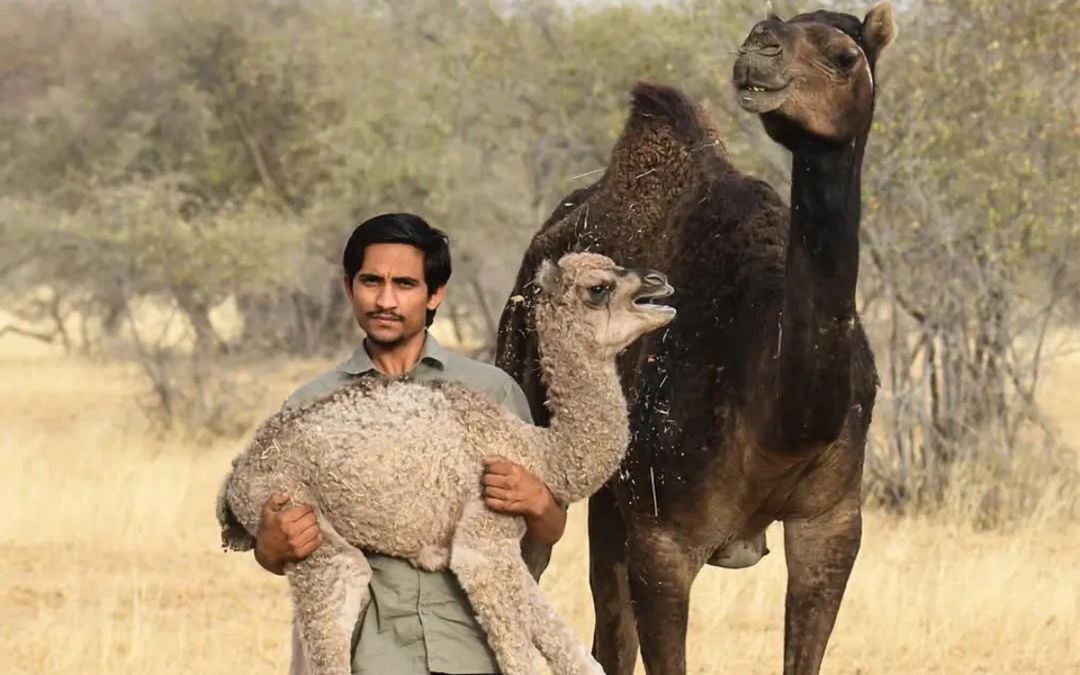In memory of a life lived for the Earth.
In an age where environmentalism is often spoken more than practiced, Radheshyam Bishnoi stood apart — not as an activist in headlines, but as a silent warrior on the frontlines. He wasn’t just a conservationist. He was a true son of Mother Nature, born of a community whose roots run deep into the soil of respect, protection, and balance with the natural world.
The Soil That Raised Him — The Bishnoi Culture
Born in Dholiya village of Pokhran, Rajasthan, he grew up as part of the Bishnoi community, a sect that has, for over 500 years, blended environmentalism with deep spirituality.
“The Bishnoi community is deeply rooted in Indian spirituality. Their values — like non-violence compassion and respect for all life — echo principles also seen in Jainism, Buddhism, and Sikhism. It is a continuation of ancient vedantic values — especially the principles of ahimsa (non-violence), dharma (righteous duty), and reverence for all living beings.
The Bishnoi faith, founded in the 15th century by Guru Jambheshwar (also known as Jambhoji), is often seen as a spiritual reform movement rooted in Hindu dharma. Guru Jambheshwar laid down 29 principles — the term “Bishnoi” comes from bis (twenty) and noi (nine) — that guide a life of compassion, truth, and environmental stewardship.
“Jeev Daya Palani — Live and Let Live.”
— Guru Jambheshwar Ji, Founder of the Bishnoi Community
They have a long-standing tradition of living in harmony with nature. When someone like Radheshyam Bishnoi lives out the highest ideals of that tradition, he becomes a living embodiment of it. Highlighting him as “the finest expression” of his community is a form of reverence — not just to the man, but to the cultural and spiritual soil that raised him.
The same desert wind that carried stories of the 363 Bishnois who gave their lives in 1730 to save Khejri trees at Khejarli, now carried the scent of a young man walking in their footsteps. He didn’t die young. He lived fully — in service, in silence, and in truth.
The Protector of Godawan — Rajasthan’s Vanishing Pride
Radheshyam will be most remembered for his tireless efforts to save one of India’s most endangered birds — the Great Indian Bustard, locally known as Godawan.
Once spread across the Indian subcontinent, the Godawan is now hanging by a thread — with fewer than 150 individuals left, mostly in Rajasthan’s Thar Desert. Their threats are many: habitat destruction, poaching, collisions with power lines, and sheer neglect.
Radheshyam made it his mission to protect them. He would walk miles under the blazing desert sun to monitor nesting sites, build water reservoirs, and keep an eye on poachers. He worked closely with local villagers, raising awareness and educating communities about the critical role this bird plays in the ecosystem.
On the Frontlines — Not Just for Birds, But for All Life
He worked with the ERDS Foundation, rescued Himalayan Griffon vultures, prevented spiny-tailed lizard trafficking, and rehabilitated injured Chinkaras. He didn’t wear a badge. His uniform was the sand on his feet, the wind in his turban, the desert in his blood.
And it wasn’t easy. He faced threats. He lacked resources. But he never stopped. In 2021, he was awarded the Sanctuary Asia Young Naturalist Award — a national recognition that, while deserved, barely captures the magnitude of his soul.
A Legacy That Will Echo
On May 24, 2025, while traveling to prevent an act of poaching in the Thar, Radheshyam and three of his fellow conservationists died in a tragic road accident. He was just 28. Gone too soon, but leaving behind not emptiness — rather, a call to action.
His life teaches us what true environmentalism looks like: it is not a trend, it is a way of being. He reminds us that culture without responsibility is hollow, that worship without protection is hypocrisy. In an India where we often boast of our heritage, Radheshyam showed us how to live it.
But his story must not fade. Let him be a reminder. A question. A challenge.
What are we doing for the Earth that raised us?
What will we leave behind when we’re gone?
He didn’t wait for change. He became it. And now, it is our turn.
See his contributions @ https://www.instagram.com/p/DGusJXCvShQ
Discover more empowering stories and insightful content like this on GRISU TIMES, your go-to destination for inspiration and knowledge.
Follow GRISU TIMES on Instagram: https://www.instagram.com/grisutimes/

